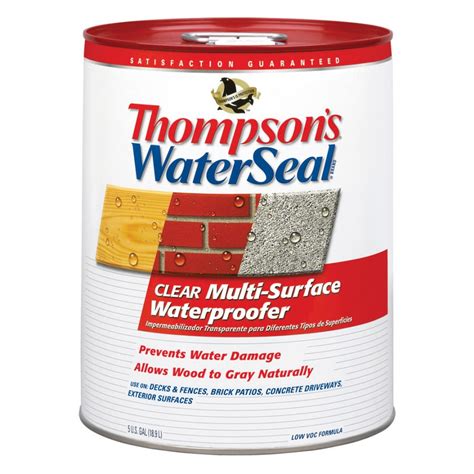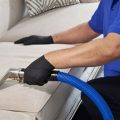The Ultimate Guide to Protecting Wood from Water
What are the best wood sealants to protect wood from water?
Protecting wood from water damage is crucial for maintaining its beauty and longevity. Wood sealants play a vital role in creating a barrier against moisture, preventing warping, rotting, and other forms of deterioration. Choosing the right sealant depends on the type of wood, its application, and the level of protection required.
Here are some of the most effective wood sealants:
- Polyurethane: A durable and versatile sealant that offers excellent protection against water, UV rays, and abrasion. It’s available in both oil-based and water-based formulations, making it suitable for various projects.
- Acrylic: A water-based sealant known for its easy application, quick drying time, and low odor. It provides good water resistance and is suitable for indoor and outdoor use.
- Epoxy: A highly durable sealant that forms a hard, protective layer. It’s ideal for high-traffic areas or applications where maximum protection is required.
- Tung oil: A natural oil that penetrates deep into the wood, enhancing its natural beauty and providing water resistance. It requires multiple coats for optimal protection.
- Marine varnish: A specialized sealant designed for marine applications, offering excellent protection against saltwater and harsh weather conditions. It’s also suitable for outdoor furniture and other projects exposed to moisture.
When choosing a wood sealant, consider the following factors:
- Type of wood: Different woods have varying levels of natural resistance to water. Softwoods like pine are more susceptible to moisture damage than hardwoods like oak.
- Application: The intended use of the wood will determine the type of sealant required. For example, a deck sealant will need to withstand foot traffic and harsh weather conditions.
- Level of protection: Choose a sealant based on the level of protection needed. High-traffic areas may require a more durable sealant than a simple stain.
Proper application is crucial for achieving the desired level of protection. Always follow the manufacturer’s instructions for preparation, application, and drying times.
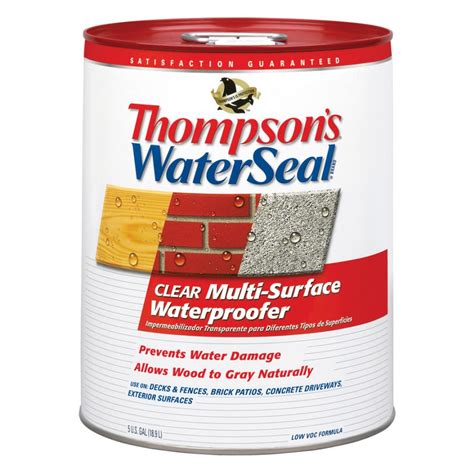
How can I prevent water damage on wood decks?
Wood decks are prone to water damage due to their constant exposure to the elements. To prevent this, it’s essential to implement a comprehensive protection strategy:
- Regular cleaning: Remove dirt, debris, and mildew buildup using a deck cleaner and a soft-bristled brush.
- Sealing: Apply a high-quality deck sealant every 1-2 years to protect the wood from water penetration and UV rays.
- Proper drainage: Ensure adequate drainage around the deck to prevent water pooling and minimize moisture buildup. This can be achieved by installing gutters, downspouts, and grading the surrounding soil.
- Ventilation: Allow for proper air circulation beneath the deck to prevent moisture trapping. This can be achieved by creating gaps between the deck boards and the substructure.
- Maintenance: Regularly inspect the deck for any signs of damage, such as rot, cracks, or loose boards. Address these issues promptly to prevent further deterioration.
In addition to these measures, consider using water-resistant materials for deck components, such as composite decking or treated lumber. These materials are inherently more resistant to water damage and require less maintenance.
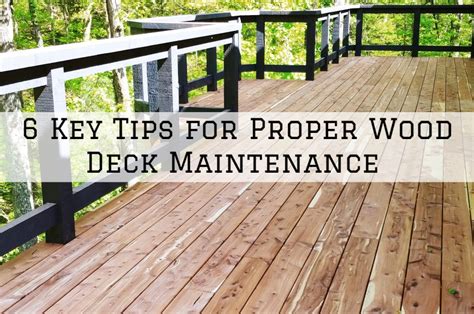
What is the best way to waterproof wood for outdoor furniture?
Outdoor furniture is constantly exposed to the elements, making it susceptible to water damage. To protect your furniture, consider these waterproofing strategies:
- Choose the right wood: Teak and cedar are naturally resistant to water and decay, making them ideal choices for outdoor furniture. However, even these woods benefit from proper protection.
- Apply a sealant: Use a high-quality marine varnish or a penetrating oil sealant to create a protective barrier against water and UV rays.
- Store furniture indoors: When not in use, store your outdoor furniture indoors to protect it from rain, snow, and harsh weather conditions. This helps extend its lifespan significantly.
- Cover furniture: Use waterproof covers to protect your furniture from the elements when left outdoors. Choose covers made from durable materials that resist mildew and UV damage.
- Regular maintenance: Inspect your furniture regularly for any signs of wear and tear, such as cracks, splits, or peeling sealant. Address these issues promptly to prevent further deterioration.
By taking these preventive measures, you can ensure your outdoor furniture remains beautiful and functional for years to come.
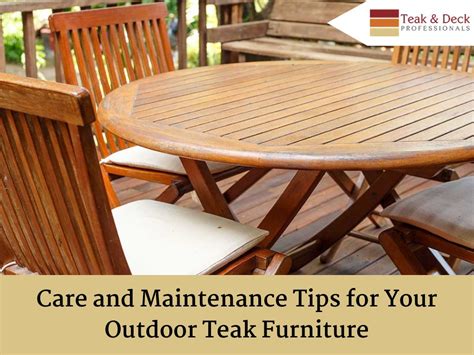
How do I protect wood from water damage in a bathroom?
Bathrooms are notorious for their high moisture levels, making wood susceptible to water damage. To safeguard your bathroom wood features, follow these tips:
- Choose water-resistant wood: Opt for hardwoods like cedar, teak, or redwood, which are naturally resistant to moisture and decay. You can also use engineered wood products like plywood or MDF, which are treated to resist water damage.
- Apply a sealant: Apply a waterproof sealant, such as polyurethane or epoxy, to all exposed wood surfaces. This creates a barrier that prevents water penetration.
- Avoid direct contact with water: Keep wood features away from direct contact with water sources, such as showers, tubs, and sinks. Install barriers like splash guards or shower curtains to minimize moisture exposure.
- Proper ventilation: Ensure adequate ventilation in the bathroom to prevent moisture buildup. Install a powerful exhaust fan and run it during and after showering to remove excess steam.
- Regular cleaning and maintenance: Regularly clean wood surfaces with a damp cloth and mild detergent. Address any signs of damage, such as mildew or warping, promptly.
By taking these steps, you can create a beautiful and functional bathroom while preventing wood from water damage.
What are some DIY methods for waterproofing wood?
If you’re looking for DIY methods to protect wood from water, here are a few options:
- Linseed oil: This natural oil penetrates deep into the wood, enhancing its natural beauty and providing water resistance. Apply multiple coats for optimal protection.
- Tung oil: Similar to linseed oil, tung oil offers excellent water resistance and a beautiful finish. It requires multiple coats for optimal protection.
- Beeswax: A natural sealant that forms a protective layer over the wood, providing water resistance and a beautiful sheen. Apply multiple coats for optimal protection.
- Paint: While not a primary waterproofing method, painting can provide a layer of protection against water. Choose a high-quality exterior paint that is specifically designed for wood.
These DIY methods offer an economical and eco-friendly approach to waterproofing wood. However, they may not provide the same level of protection as commercial sealants.
Is it necessary to waterproof wood for indoor use?
While not as crucial as for outdoor applications, waterproofing wood for indoor use can still be beneficial. It can protect against spills, humidity, and even minor water leaks. For example, you may want to waterproof wood furniture, floors, or cabinets in areas prone to spills or humidity.
Using a sealant, such as polyurethane or acrylic, can provide a protective barrier and prevent water damage. However, it’s essential to choose a sealant appropriate for indoor use, as some formulations are designed for outdoor applications and may emit strong odors or have a long drying time.
What are some natural ways to protect wood from water?
In addition to commercial sealants, there are natural ways to protect wood from water:
- Cedar: Cedar is a naturally water-resistant wood due to its high oil content. It’s often used for outdoor furniture and siding.
- Teak: Teak is another naturally water-resistant wood, known for its durability and resistance to decay. It’s often used for boat decks and outdoor furniture.
- Redwood: Redwood is a durable wood that contains natural oils that provide water resistance and prevent decay. It’s commonly used for outdoor structures and siding.
- Tung oil: This natural oil penetrates deep into the wood, enhancing its natural beauty and providing water resistance.
- Linseed oil: Similar to tung oil, linseed oil offers excellent water resistance and a beautiful finish. It requires multiple coats for optimal protection.
These natural options offer a sustainable and eco-friendly approach to protecting wood from water. They can be used as a primary sealant or as a supplementary treatment to enhance the water resistance of existing sealants.
What is the difference between water-resistant and waterproof wood?
Water-resistant wood has been treated to resist water penetration but is not completely waterproof. This means it can withstand moisture for a limited time but may still be susceptible to water damage under prolonged exposure or in high-moisture environments.
Waterproof wood, on the other hand, is specifically designed to resist water infiltration. It’s often treated with a sealant or coating that creates a barrier against water penetration. This type of wood is ideal for applications where it will be exposed to constant moisture, such as boat decks or outdoor furniture.
It’s important to note that even waterproof wood can be affected by prolonged exposure to water or harsh weather conditions. Proper maintenance and sealant reapplication are crucial for maintaining its water resistance.
What are some of the signs of water damage in wood?
Recognizing signs of water damage in wood early on is crucial for preventing further deterioration and costly repairs. Here are some common indicators:
- Discoloration: Water damage can cause wood to become darker or lighter, depending on the type of wood and the severity of the damage.
- Warping or bowing: Water absorption can cause wood to warp or bow, creating an uneven surface.
- Softness or sponginess: Wet wood becomes softer and spongier than dry wood. This is a sign of rot or decay.
- Mildew or mold: Moisture creates an ideal environment for mildew and mold growth. These fungi can damage the wood and pose health risks.
- Cracks or splits: Water damage can cause wood to crack or split, especially if the wood has not been properly sealed.
- Musty odor: Water damage can lead to a musty odor due to the growth of mold and bacteria.
If you notice any of these signs, it’s essential to take immediate action to address the water damage and prevent further deterioration.
How do I repair water-damaged wood?
Repairing water-damaged wood depends on the severity of the damage. For minor damage, you may be able to repair it yourself, but for more extensive damage, it’s best to consult a professional.
Here are some steps for repairing water-damaged wood:
- Assess the damage: Determine the extent of the damage and whether it can be repaired or if the wood needs to be replaced.
- Remove any affected wood: Cut out any rotted or damaged wood using a chisel or saw.
- Treat the remaining wood: Apply a wood preservative to the remaining wood to prevent further decay.
- Replace the damaged wood: Fill the void with new wood or use a wood filler to restore the original shape.
- Sand and finish: Sand the repaired area smooth and apply a sealant to protect the wood.
Remember, it’s crucial to address water damage promptly to prevent further deterioration and costly repairs. If you’re unsure about the best course of action, consult a professional for expert advice.
Table Summarizing Information on Protecting Wood from Water
Here’s a table summarizing the key information discussed in this article:
| Factor | Description | Recommendations |
|---|---|---|
| Wood Type | Different woods have varying natural water resistance. | Choose water-resistant woods like cedar, teak, or redwood. Use engineered wood products like plywood or MDF. |
| Application | The intended use of the wood will determine the type of protection required. | Select a sealant appropriate for the application, considering factors like exposure, traffic, and weather conditions. |
| Sealants | Various sealants offer different levels of protection and benefits. | Choose a sealant based on the desired level of protection, considering factors like durability, UV resistance, and aesthetic appeal. |
| Maintenance | Regular cleaning, inspections, and sealant reapplication are essential for maintaining the protection of wood. | Clean wood surfaces regularly, inspect for damage, and reapply sealant according to the manufacturer’s recommendations. |
| DIY Methods | Natural oils like linseed oil and tung oil can provide water resistance. | Apply multiple coats for optimal protection, and consider using commercial sealants for more demanding applications. |
| Water Damage Signs | Early detection of water damage is crucial for preventing further deterioration. | Inspect wood surfaces for discoloration, warping, softness, mildew, cracks, and musty odors. Address any signs of damage promptly. |
| Repairing Water Damage | Repairing water-damaged wood depends on the severity of the damage. | For minor damage, consider DIY repairs. For extensive damage, consult a professional. |
FAQs
What happens if wood gets wet?
When wood gets wet, it absorbs moisture, leading to various issues like warping, bowing, rotting, and mold growth. The severity of the damage depends on the type of wood, the duration of exposure, and the level of moisture.
Can I use wood for outdoor projects without waterproofing?
It’s not recommended to use wood for outdoor projects without waterproofing. Exposure to rain, snow, and humidity can cause significant water damage, leading to rotting, decay, and structural issues.
What are the best wood stains to use for outdoor furniture?
Look for stains that offer UV protection and water resistance. Oil-based stains provide a deeper penetration and better protection than water-based stains. Always apply a sealant over the stain to enhance its water resistance.
How often should I reapply sealant to wood?
The frequency of sealant reapplication depends on the type of sealant, the level of exposure, and weather conditions. Typically, outdoor wood surfaces should be resealed every 1-2 years. Check the manufacturer’s instructions for specific recommendations.
Can I use a waterproof paint to protect wood?
Waterproof paint can provide a layer of protection against water, but it may not be the most effective solution for long-term protection. It’s best to use a specialized wood sealant for optimal water resistance.
What are some common mistakes people make when waterproofing wood?
Some common mistakes include using the wrong sealant, applying sealant unevenly, not allowing the sealant to dry properly, and neglecting regular maintenance.
Is there a way to prevent water damage from spills on wood furniture?
Yes, you can use coasters and placemats to prevent spills from reaching the wood surface. Applying a protective sealant can also help prevent spills from causing lasting damage.

